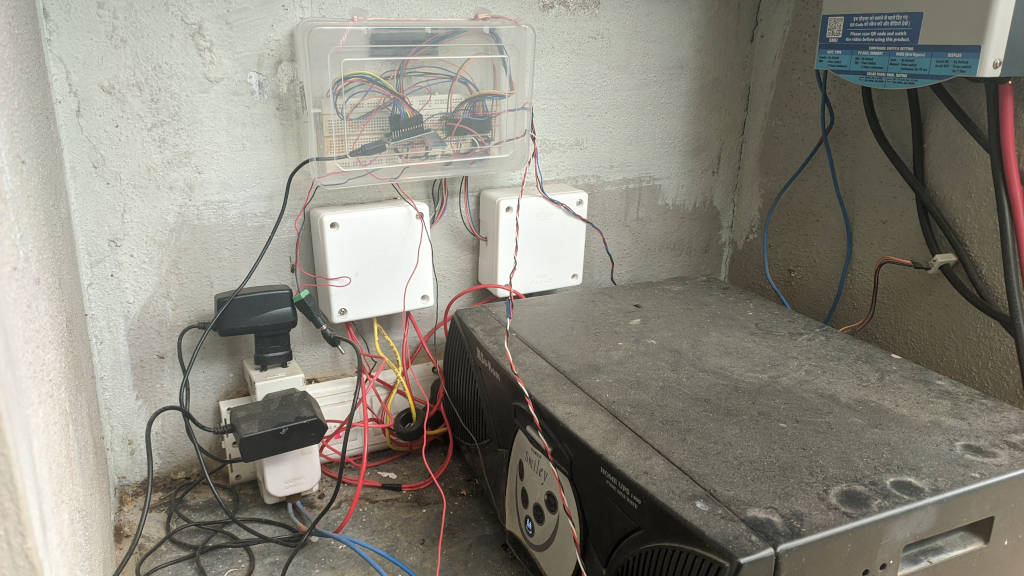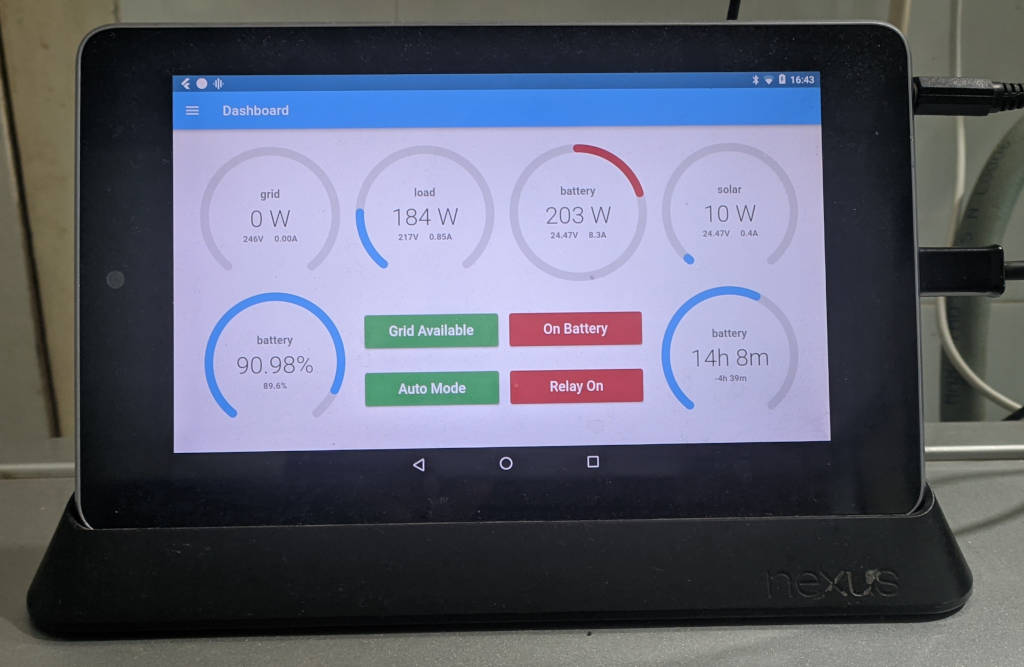Getting The Most Out Of Solar Panels
It’s been a while since I updated you on my solar panel project. I thought I should continue where I left off. So after collecting all the data from my solar panels, batteries, grid and load, I observed something interesting. While the SMU was disconnecting the grid so that the load can run on batteries and solar energy, we are not fully utilizing the solar energy. During a perfectly clear day, the solar panel is generating more power than we can use during the day. The excess energy is just getting wasted. Can we do something about it?
Why are we wasting energy?
The reason is quite simple really. During the day time, the only appliances that can use solar power will be fans, TVs or all the electronics that are charging or running or on standby like laptops, phones, etc. Remember that solar panels + batteries are powering only 5 amp load in my house. All the 15 amp loads like microwave, geysers, washing machine, refrigerator etc still run on the grid. Given that we rarely need to use fans in Bangalore that is out of the picture. We don’t watch that much TV when parents are not visiting us or if there is no cricket.
The rest of the electronics are on standby, or charging. I do have a media center which runs 24/7 but it pulls less than 10W. All these devices put together pull in less than 100W on average. While the solar panel generate upwards of 300W for a good part of the day. So the rest of the 200W is just lost.
The reason the power is lost is because the batteries are fully charged overnight and in the morning when the sun comes up, the SMU disconnects the grid. Now if the solar panels are producing 300W and we are using only 100W, the SMU can do nothing with the excess energy. So it does a PWM. Don’t worry if you don’t know what that means, it is an engineer’s way of saying only part of the solar power is utilized and then rest is just lost. I found this out when I measured the solar current using my arduino board.
How can we reduce the wasted energy?
We understood that the reason the solar energy is being wasted is because there is no place to store the excess energy. Why? Because the batteries are already full charged by the time solar panels start producing power. And the SMU does not disconnect the grid until there is sun.
So I got an idea to disconnect the grid a few hours before sunrise. Then the batteries will be used to power the load for a few hours until the sun comes up. By the time the sun comes up, the batteries are partially depleted and if there is excess energy from the solar panels it can charge the batteries.
Tuning the system
Now the question arises, how early do you turn off the grid and let the load run on batteries in the night? If I turn off too late in the day, the batteries deplete only little, lets say 95%. Then lets say the day is very sunny and the solar panels charge the 5% in one hour. The rest of the day the solar energy will be wasted.
On the other hand if I turn off the grid too soon, then there is a risk that batteries will be depleted too much, lets say 50%. Now if it turns out to be a cloudy day and there is a power cut. Then the solar panels will not be generating enough power (cloudy day remember?) and since there is no power the batteries will deplete further. And at some point in the day you may run out of battery and you will be without power.
If you did not turn off so early in the night, when the power goes out you at least would have had a 100% battery to help you get through a cloudy day. So these are the design constraints. By some trail and error I found that turning off the grid power at 6 am works well for us. The batteries deplete to about 85% by the time the sun comes. On a cloudy day the batteries last for about 10-16 hours from there. On a very sunny day the batteries are fully charged by 5 pm.
Automating the system
Of course I don’t manually turn off the grid every morning at 6 am and turn it on in the evening. That is too much work. That is why we have automation. So I connected a double pole double throw (DPDT) relay on the grid side. This relay is controlled by the same arduino micro-controller that is collecting the voltage and current data. I put all the electronics in plastic boxes to protect them from the elements.

The transparent box (up top in the picture) contains the arduino board which is connected to the two square white boxes below it. The white box on the left measures grid voltage, current and also houses the relay to disconnect the load from grid at will. The right white box houses sensors to measure load voltage and current. The arduino directly measures battery voltage, battery current and solar current.
The arduino is basically just a dumb interface to collect the data and turn on or off the relay. The brains are on an android tablet which actually uses the data from the arduino board and instructs it to turn on/off the relay. I am running the android app on an old Nexus 7 tablet that I own.

Conclusion
With this small upgrade to my system, I am harnessing more of the sun’s energy. I have done a lot more software updates after this, but that will be for another post or may be not. I think it might be getting boring for my readers. I have been working on the software for more than 6 months now and I am still working on it.
In the future I would like to have even more smartness added to the software. For example, I could check the weather of the upcoming day and depending on how cloudy or sunny it will be, I can turn off the grid much later or earlier in the night. That way I can improve the battery health while not wasting energy. Oh, by the way, I read so much about lead acid batteries and how to charge them, I feel like I can write a book now :). Anyway all that in another post perhaps. For now, I am maximizing the energy from my lone 320 W solar panel.

